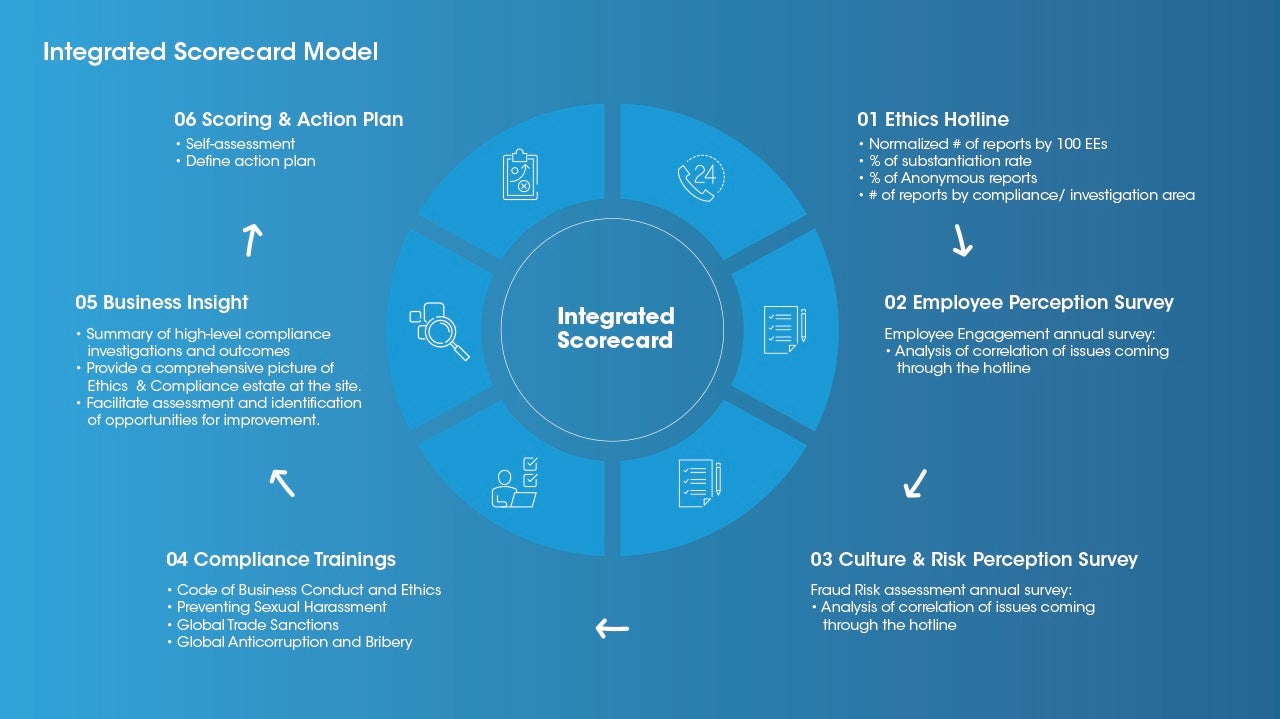Gone are the days of in-house legal organizations acting as siloed departments. Instead, today's top teams are fully integrated with their business colleagues.
Not only are they tasked with providing strategic counsel and risk management, but they are also asked to support decision-making in essential areas like diversity, equity, and inclusion (DEI) programs and, increasingly, environmental, social, and governance (ESG) efforts.
In addition, a top priority for every in-house team in 2022 and beyond should be ethics and compliance. The reason? Establishing (or enhancing) a value-based ethical and compliant culture can help limit legal exposure and improve financial results, boost employees’ happiness, and sharpen a brand's image.
However, these teams may be facing an uphill battle. GBES's 2021 State of Ethics & Compliance in the Workplace report showed that nearly one-third of all global employees reported feeling pressure to compromise their organization's ethics standards during periods of change.
Thus, how can busy in-house legal departments prioritize, track, and improve compliance and ethics? We asked ourselves this question at Flex in April 2020.
A data-based approach
Going into this project, we knew it was nearly impossible for in-house counsel to police compliance for all of Flex’s 160,000 employees across 100 plus sites in 30 countries. Instead, we decided to extend our team's reach by scaling ethics and compliance adherence, making it a part of every site and department leader’s job.
To ensure this approach was effective, we increased transparency with data. We developed an integrated scorecard that leverages the vast amount of information our company collects each year from various sources.
The goal? Create a process that helps "hold up the mirror" to leaders and measures their performance in the areas of compliance, ethics, and risk.

Flex trusts our employees to do the right thing, and they almost always do. Our managers are generally effective at managing ethics and compliance, but it gets more challenging to know what is going on in larger groups.
The integrated scorecard empowers managers of larger teams with data assembled from various sources in an easy-to-understand format. The manager can then see how they and their teams perform and identify any trends and hot spots. The manager is responsible for developing and executing any remedial action plan. In this way, managers understand where weaknesses exist and are accountable for the outcomes.
The team and information behind the scorecard
This journey to a data-driven, value-based ethical and compliant culture requires an incredible amount of collaboration. For Flex, and most other organizations, it requires a top-down mandate from leadership with support from a cross-functional group of legal, compliance, IT, internal audit, and human resources leaders.
It's essential to ensure group commitment from the beginning so each team is on the same page and working towards the same goal.
If any department is sensitive about sharing data widely due to confidentiality, privacy, or commercial sensitivity, early collaboration can help break down silos and balance the risks versus benefits appropriately. It's also the only way to obtain a holistic view of a company's ethics and compliance performance.
It's essential to ensure group commitment from the beginning so each team is on the same page and working towards the same goal.
With a unified approach established, teams can begin identifying data that will help document each site's "score," including cultural surveys, hotline reporting, compliance reports, audit assessments, and more. Each of these data sets usually lives within an existing software system.
With the support of APIs, plug-ins, automation, and help from IT, teams can generate a transparent scorecard that provides a near real-time look at each site's ethics and compliance record.
Driving value from the scorecard
As the saying goes, “You can’t change what you don’t measure.” The scorecard measurement resolves this by enabling change management.
The data from the scorecard empowers site leadership with information to create action plans that address potential issues, situations, and hot spots before they become a problem. The scorecard can also help identify misconduct, unethical behavior, and compliance lapses across regions and departments.
Thanks to scorecard reporting at Flex, we've even been able to pinpoint ethics and compliance issues down to specific production lines in a factory. The response to these issues can often be easy fixes, like improving the working conditions or changing shift patterns and supervision.

With all the data coming in, we can also identify interesting correlations between events such as large product ramps with aggressive schedules and higher incidences of workplace misconduct. This enables us to be more proactive and predict where potential flashpoints may pop up so we can get ahead of it with targeted training and tone setting.
Ultimately, the scorecard provides an easy, repeatable, and scalable process for organizations to prioritize, track, and improve compliance and ethics. It enables managers to chart performance over weeks, months, and years, incorporating the scores and progress into regular communications that enforce zero-tolerance.
As a result, it drives ethics further down the management chain. It also enables managers to make better decisions, prioritize where they need to focus their efforts and provide a closed-loop accountability system. It can even provide the ability to compare sites and functions against each other.
From a leadership perspective, the scorecard is one of the first things Flex CEO Revathi Advaithi asks for at every site that she visits, emphasizing their importance and our overall strategy to improve culture from the corner office to the factory floor.
Infusing artificial intelligence… and more data
That's just the start of the scorecard journey. The future of the legal profession is ripe with data-driven practices.
The scorecard can only grow from here, adding more data feeds from other sources, including trade, health and safety, security, and more. With big data analytics and artificial intelligence, we can create a system to identify and hopefully predict ethics and compliance lapses so we can get ahead of them in the future.
This approach completely switches the focus of in-house counsel from traditional policy setting, training, and policing to using and managing more data and data-driven insights. This helps the legal team integrate more closely with the business to identify patterns and proactively prevent incidents before they happen.
Demonstrating value with metrics
A big part of any new business initiative, especially the scorecard, is to prove the value you're adding to the business, and data doesn't lie.
Showing specific examples of misconduct or compliance issues identified by the scorecard makes the conversation real. It helps eliminate emotion and address the problem head-on. It's even more powerful when you can highlight outside counsel fees, investigative costs, internal costs, and financial penalties that were avoided due to the scorecard.
Further, with the scorecard, you can benchmark where your company is now and show there is a direct correlation between having a strong ethical culture and stock performance or other financial metrics. It's right there in the data.
It won’t be an easy journey, but the results will be worth it. Enhancing or transforming to a value-based ethical and compliant culture starts with an energized legal team, a vision, and a cross-functional approach to data.
Good luck on your journey!





